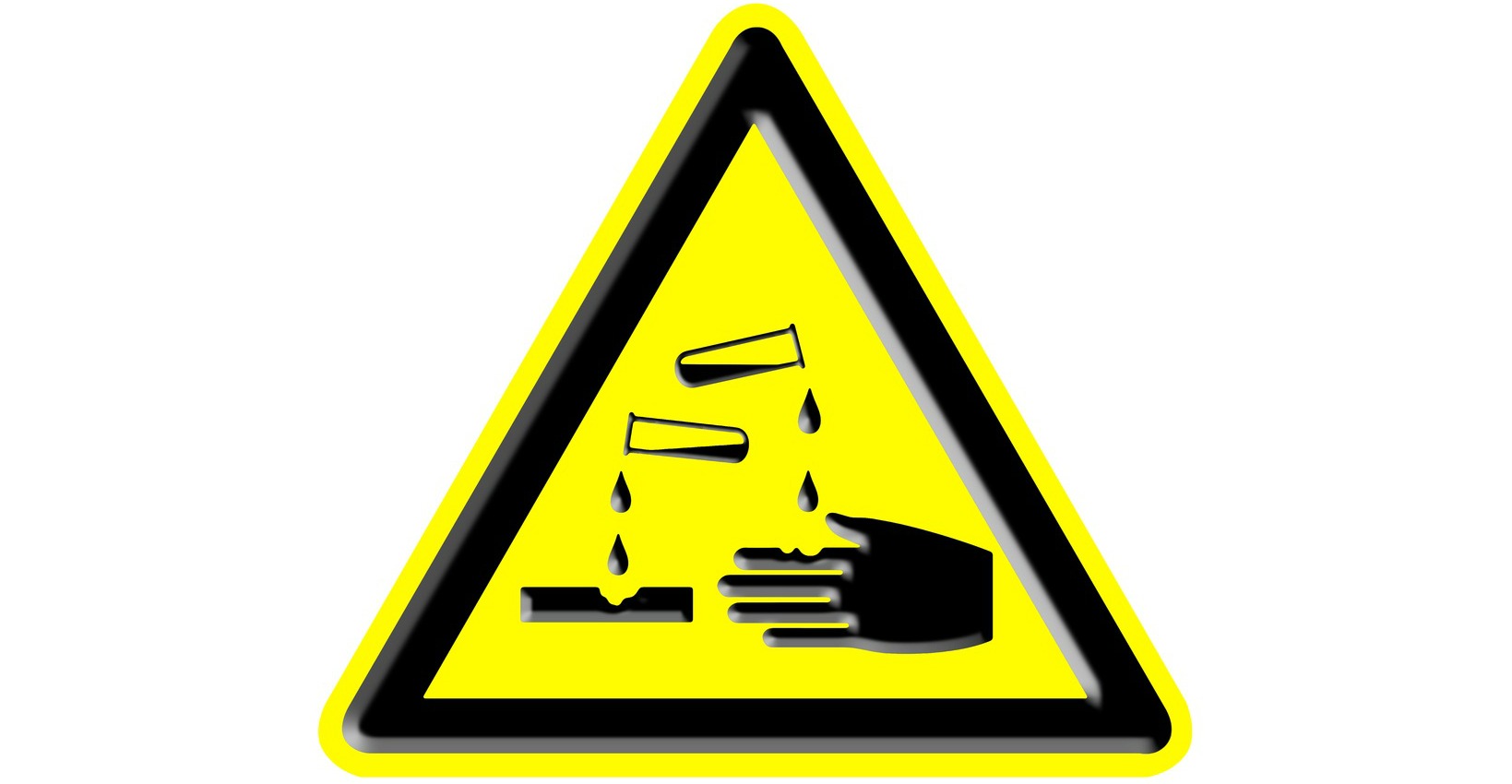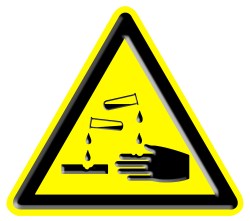In November 2002, a small group of scientists gathered at the University of Kansas with one clear mission. The topic at hand: an industrial chemical called n-propyl bromide, or nPB. Their goal, according to the conference agenda and meeting notes, was to design a “research program needed to establish nPB as a safe product.”
“It was clear almost from the beginning that the meeting was not about science,” said Kim Boekelheide, an attendee of the conference and a pathology professor from Brown University. Three days after the conference, Boekelheide wrote a letter to the Kansas researchers asking that his name “not be used in any documents prepared or submitted regarding this activity.”
In the decade after that fateful meeting, nPB grew vastly more popular. In furniture factories throughout the South, this chemical is the glue that bonds foam cushions in most office chairs and home couches. At local dry cleaners, it removes spots from delicate fabrics without getting them wet. Car mechanics use it for degreasing engine parts. The army uses it to waterproof bullets. Spray cans are sold online for household use.
Indeed, the scientists, convened in Kansas by EnviroTech, an Illinois-based company that markets products made from nPB, helped drive the 15-fold increase in nPB’s use from 1998 to 2012, primarily by pushing back against tighter oversight by regulators. The two scientists who played the biggest role in organizing the conference, Karl Rozman and John Doull, had already managed to get an EnviroTech advertising pamphlet published in a peer-reviewed journal, without disclosing who had funded the research. Rozman and Doull were outfitted with a $50,000 budget for the one-day event, and were also paid over $100,000 by EnviroTech to produce research suggesting that concerns about nPB’s health impacts were overblown.
But as nPB found its way into more and more American workplaces, it became clear that something was truly wrong. Across the U.S., factory workers began showing up in local hospitals and emergency rooms, unable to walk and with no feeling in their arms or legs except for sporadic shooting pain or a pins-and-needles sensation. Over the past 15 years, hundreds of people exposed to nPB have been sickened [PDF], many of them left permanently disabled after breathing in the chemical’s fumes, federal records show.
The chemical, it turns out, is a potent neurotoxin that eats away at nerve endings. Some workers who handle it may never be able to have children, researchers warn. Even at low levels of exposure it may cause cancer, according to researchers at the National Institute of Health.
The story of nPB’s proliferation offers a cautionary lesson on how chemicals are regulated in the United States. Even when experts discover that a chemical is harming people, federal regulators are ill equipped to do anything about it, thanks in part to an obscure federal law called the Toxic Substances Control Act, or TSCA, that allows chemical makers to sell products without first proving they are safe. That 37-year-old statute is the only major federal environmental law that’s never been substantially updated since it was first written.
“It would be hard to design a law more stacked against the regulators than the 1976 Toxic Substances Control Act, which is supposed to ensure the safety of thousands of chemicals used in household products and manufacturing,” the New York Times editorial board wrote in an April call for reform.
But even when federal regulators have tried to intervene to control hazardous chemicals — like they did with nPB — their efforts have been largely toothless. Though the Occupational Safety and Health Administration presciently flagged the hazards of this chemical in 1999, the agency has never set a mandatory exposure limit for it, leaving employers and workers in the dark. And although EPA recommended limits on fumes in workplaces to protect people’s health, the agency has little authority to enforce those standards.
“American workers serve as unwitting guinea pigs to test the toxicity of these new compounds,” said Jeff Ruch, executive director of Public Employees for Environmental Responsibility, a whistle-blower advocacy network. “Not surprisingly, more than 40,000 U.S. workers die each year from occupational exposure while another 200,000 are disabled annually.”
Meanwhile, federal records obtained by Grist through open records requests show workers using the chemical pleading with the EPA to provide reliable information about whether and how nPB should be used. “We are an industry without guidance,” one dry cleaner wrote. A 28-year old working at the Corpus Christi Army Depot cushion makers wrote to EPA in 2009 to complain that “we are constantly being evacuated and nobody tells us anything,” adding that breathing the chemical left her feeling “like a zombie” and her coworkers were visiting neurologists because their arms and legs had gone entirely numb.
Prospects for a fix look dim. A bill presently before Congress could update the way that toxic substances are regulated. But the bill, a compromise between the chemical industry and safety advocates, could end up so watered down as to be useless. Besides, the legislation has little chance of winning White House backing or getting enough bipartisan support to make it through a deeply divided Congress.
The burden remains on regulators to prove that a new chemical is unsafe, even though they have virtually no legal authority to compel manufacturers to do testing. That’s why even though roughly 85,000 chemicals are registered for use in the U.S, only about 200 have been subjected to safety testing under the law, and only five have faced restrictions because they pose an “unreasonable risk.”
In the case of nPB, the evidence of harm has mounted for years. An extensive expose by The New York Times chronicled these hazards in painful detail earlier this year. But the untold story about nPB is the role that chemical sellers like EnviroTech have played, with help from paid researchers, in muddying the waters about the dangers of this chemical.
“The animals got cancer and have been dead for five years, but EnviroTech is still saying the science is not finished yet,” said Adam Finkel, executive director of the University of Pennsylvania Program on Regulation, referring to research showing [PDF] that nPB is likely a potent carcinogen. While he was a top official at OSHA in the late ’90s, Mr. Finkel was the first to sound the alarm about dangers of nPB, but it can take decades for OSHA to craft binding rules for chemical exposures.
In this vacuum created by federal inaction, EnviroTech has waged an effective marketing campaign promoting nPB as non-hazardous and “green.” The company based many of its claims on a peer-reviewed study, published just before the Kansas conference, by the two prestigious toxicologists who organized it: Karl Rozman, an internationally known chemist, and John Doull, who is most famous for having written a preeminent textbook on toxicology.
Doull was also useful to EnviroTech because from 1992 to 1999, he was the chairman of the committee at the American Conference of Governmental Industrial Hygienists that recommends safety standards for workplace chemicals. Since OSHA can take so long to set federal standards, the public and most businesses rely on those set by the hygienists’ conference.
A review of court documents and meeting notes shows how these researchers, at times joined by Tibor Rozman, a medical doctor and Karl’s brother, worked hard to help EnviroTech assuage concern about nPB’s safety and to ward off regulators in the U.S. and Europe.
“Some, perhaps big, trouble is coming up for n-propyl bromide,” Karl Rozman warned EnviroTech in an August 2002 email. European officials were focusing on nPB, he wrote, because EnviroTech and other companies had downplayed potential risks in their marketing materials. Tibor Rozman added: “Once decided in a negative way for nPB it will be very difficult to reverse the verdict.”
Already, some producers of the chemical were starting to take a more cautious posture toward nPB. Three major manufacturers issued stern warnings to customers not to use the chemical as a solvent, or stopped selling it all together. Some manufacturers began switching away from using nPB. “There is a weight of evidence that should sound warning bells to any thinking person,” Protonique SA, a circuit-board manufacturer in Switzerland that used nPB, said as it described the chemical’s health hazards to customers.
Concerned by this shift, EnviroTech decided to fund research that suggested nPB was safer than others believed. Throughout the process, the company played a subtle hands-on role in guiding the researchers’ findings. At one point, EnviroTech pressed the professors to push the EPA for weaker limits and to raise specific objections to the agency’s methodology. “After discussions with Dr. Doull, I have changed a few sentences to clarify our opinion,” Karl Rozman told EnviroTech.
In October 2002, Rozman and Doull’s study on nPB was published in the journal Applied Occupational and Environmental Hygiene. In violation of the journal’s financial disclosure rules, the article made no mention of EnviroTech’s role in funding the research.
At least one reader of the journal wrote to complain.
“In publishing a paper that has been — literally — a sales tool of a nPB solvent supplier for years, APPLIED effectively endorsed EnviroTech International!” Jimmy Witcher, the president of Techspray, a chemical company, wrote in a November 2002 email to the journal editor.
EnviroTech representatives and Rozman failed to respond to requests by Grist for comment on nPB’s safety or the validity of their conclusions.
In the meantime, reports of the harm done by this “green” chemical have increased. They started when a dozen workers at a chemical manufacturer making nPB first told researchers that their fingers and toes had gone numb. Things escalated quickly, and in recent years, dozens of furniture makers and upholsterers using the chemical have been turning up in emergency rooms across the U.S., complaining of weakness and an inability to walk, impaired cognitive function and memory loss.
Researchers then found that nPB had caused a dry cleaning shop worker in New Jersey to have problems seeing, muscle spasms, and numbness – worrisome because nPB-based products like EnviroTech’s DrySolv have been marketed as an eco-friendly alternative to the nation’s roughly 40,000 dry cleaning shops. For decades, dry cleaners relied heavily on another chemical called perchlorethylene, or perc, untested when it hit the market, which has contaminated drinking water supplies across the U.S. and was finally banned under an international treaty because it destroyed the ozone layer.
When it comes to health impacts, regulators say nPB could be even worse than perc. And these crippling neurological injuries may only be the tip of the iceberg, as workers exposed today develop cancers years later.
“The one thing that’s common in all of these cases is that the workers get the short end of the bargain,” said Finkel, who plans to testify as an expert witness in a lawsuit against EnviroTech brought by the dry cleaner who was sickened after using nPB. “If there’s no rule, there’s no guidance, there’s no recommendation, then it’s the wild west.”
For now, the push to overhaul the Toxic Substances Control Act is stalled in committee, and some environmentalists say that may not be such a bad thing: They’re concerned that the federal law could preempt California’s state laws on chemical control, and say that federal rules must be more rigorous than state standards or the law will represent a step backwards.
But for EnviroTech, that means business as usual. The company, which declined repeated requests for comment, continues in its sales brochures and videos to dismiss worries about nPB’s safety. In a December advertisement, it called fears about nPB’s health impacts “more rumors and innuendo.” Even at levels many times higher than EPA or other experts in fact recommend, nPB, the advertisement claims, “offers complete safety.”





